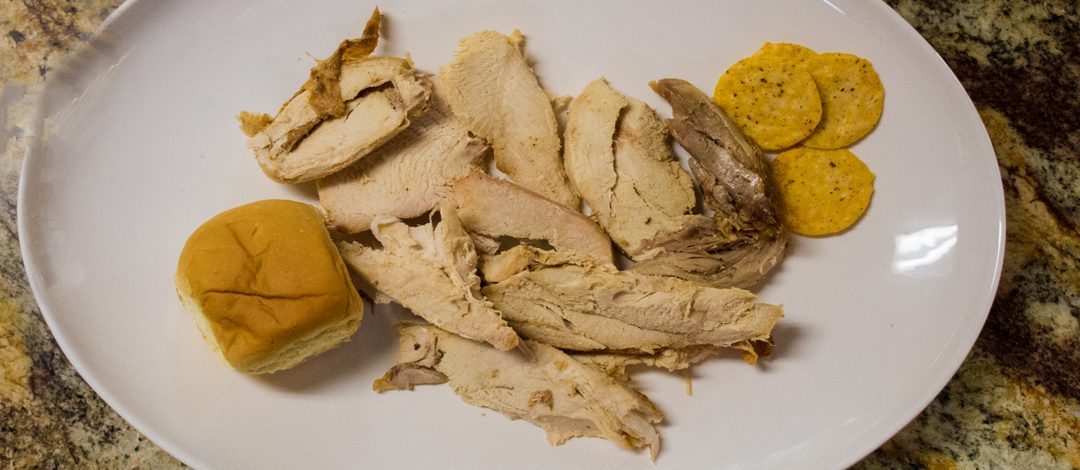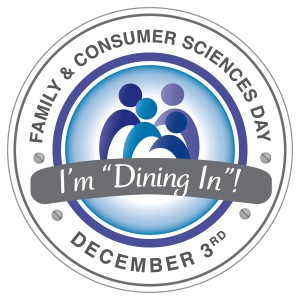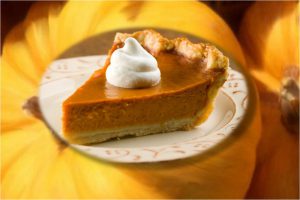
by Ginny Hinton | Nov 30, 2019

Safe and delicious holiday leftovers
Photo Source: UF/IFAS
For some of us, the best part of holiday eating is snacking on the leftovers. There’s just nothing better for a post-holiday lunch than a turkey sandwich with some cranberry dressing. With a little care and attention to detail, holiday foods can be safe and delicious for several days after the big event.
So, what do we all need to know about holiday food safety? Take a look below for some quick and easy tips.
Reheating foods in the oven: Set your oven temperature no lower than 325˚F and reheat to 165˚F for turkey or chicken. Reheat ham to 145˚F. You will need a meat thermometer to check the temperature. If you don’t already have one, they’re easy to find and fairly inexpensive. To keep your meat moist, add a little broth or water and cover it with foil or an oven-proof lid.
Reheating foods in the microwave: To keep your turkey or chicken moist, sprinkle a little broth or water and cover it. You won’t need a lot of extra moisture for microwave cooking. If your microwave doesn’t have a revolving tray, be sure to rotate the meat for even heating. Let it stand for a minute or two after heating, as it will continue to cook for a bit. Just like with oven reheating, use a meat thermometer and heat poultry to 165˚F, ham to 145˚F.
Storing your turkey: It may be a painful thought, but if any turkey, stuffing, or gravy gets left out at room temperature for more than two hours, it needs to be thrown away. It’s better to waste food than to risk getting sick, especially over the holidays! Divide leftovers into small portions so they will quickly and evenly cool. Store in the refrigerator or freeze in appropriate containers.
Important Tips: Use refrigerated turkey, stuffing and gravy within four days. If you freeze your leftovers, use them within six months for best taste and quality. Not sure how long something’s been in the refrigerator or freezer? The old maxim still holds true: When in doubt, throw it out.
Best wishes to you for a safe and happy holiday season!

by Laurie Osgood | Nov 25, 2019

Photo credit: UF/IFAS NW District
Rice and pasta are a staple of most family meals. But did you know these simple grains can lead to a foodborne illness? Uncooked rice and pasta can contain spores of Bacillus cereus, a bacterium that can cause foodborne illness. These spores can survive even when rice or pasta is cooked. If the rice or pasta is left standing at room temperature, like in a pot on the stove, these spores can grow into bacteria. These bacteria will then multiply and produce toxins (poisons) that can cause foodborne illness. Bacillus cereus, sometimes called B. cereus, can cause nausea, vomiting, and abdominal cramps.
Preventing Contamination by B. Cereus
Because B. cereus endospores are heat resistant, they are likely to survive cooking at temperatures that would destroy other foodborne pathogens. Bacillus cereus spores can grow when exposed to heat or improper handling.
Recommendations for Proper Handling of Rice and Pasta:
- Cook rice and pasta at 135ºF or above and maintain at that temperature outside of the refrigerator.
Serve rice or pasta as soon as it is cooked.
- Cool in the refrigerator at 41ºF or below within 2 hours of cooking.
- Store rice or pasta in the fridge using a shallow container or resealable bags.
- Cooked rice or pasta can be stored in airtight containers in the fridge for 3 – 5 days.
- Do not reheat rice or pasta more than once.
During the holidays, celebrations usually center around family and good food, and, therefore, our refrigerators easily can become full. We tend to leave rice or pasta out on the stove when there isn’t any room in the fridge. This is where the problem occurs. By following proper food handling techniques, you can ensure that everyone enjoys the holidays and the fabulous foods that are part of the festivities.
To learn more about Bacillus cereus or other foodborne illnesses, contact your UF/IFAS County Extension Office.
Resources:
UF/IFAS Electronic Data Information Source (EDIS), Preventing Foodborne Illness: Bacillus cereus
The Number of Food Poisoning Cases Caused by Bacillus cereus is on the Rise. (2015, April 1). Infection Control Today. Retrieved from https://www.infectioncontroltoday.com/food-safety/number-food-poisoning-cases-caused-bacillus-cereus-rise

by Angela Hinkle | Nov 21, 2019
Make the pledge Tuesday, December 3rd to Dine In for better health – physical, social, and cultural.
Why
Most of us eat every day without thinking about it. We need to eat to nourish our body, so it’s just a regular thing we do. But eating also can be an important social and cultural way for families to come together.

FCS Dine In Day
When we eat together as a family, it gives us the opportunity to practice cultural traditions and share food histories. We get the chance to explore new foods and learn new skills – like eating with chopsticks. We may get the chance to learn and practice table manners and learn literary and conversation skills. Paul Fieldhouse of the Vanier Institute of the Family says, “For young children, ‘table talk’ may be the main source of exposure to family conversation and the expression of thoughts, ideas, and emotions.” Eating the family meal also can help us de-stress by setting a reassuring rhythm and structure to our day.
Eating family meals at home has additional benefits. The University of Washington found that families who cook and eat more often at home tend to eat a healthier diet. Their Healthy Eating Index is high – meaning they eat more fruits and vegetables and less calories, sugar, and fat. They eat smaller portions helping to regulate weight. Some research suggests we eat smaller portions at home because we eat more slowly and talk more. This, however, does not equate to a higher cost. Meals cooked at home generally cost less than those eaten out.
How
So, how can your family eat more meals together at home?
- Try making and eating meals at home a priority for your family. Think about how important it is spending time together.
- Keep it simple. Don’t worry about making a big, fancy meal.
- Start with just a few meals a week. Then slowly add more meals together as you find your “family meal groove.”
- Let the whole family help plan meals. Think about foods your family likes and build around those ideas. Try to get all the MyPlate healthy food groups in – whole grains, plenty of fruits and vegetables of all colors, shapes, and textures, lean plant and animal proteins, and low- and no-fat dairy. Make your grocery list together.
- Let everyone be involved in planning, preparing, table setting, and cleaning up afterwards.
- Make it a goal to start this December 3rd to Dine In for better health.
Resources:
(Still) Eating Together: The Culture of the Family Meal. Retrieved November 16, 2019 from https://vanierinstitute.ca/eating-culture-family-meal/
Cooking at Home Tonight? It’s Likely Cheaper and Healthier. Retrieved November 15, 2019 from https://www.sciencedaily.com/releases/2017/03/170314150926.htm

by Kendra Hughson | Nov 21, 2019
Cranberries were likely a part of the Thanksgiving tradition dating all the way back to the very first one. Native Americans ate dried or fresh cranberries and they used cranberries for dye and medicinal purposes. They also used cranberries to make pemmican – a mixture of berries, dried meat, and fat. Pemmican was a common nutritional dish that could be stored for months. Cranberry sauce became commercially available in its familiar canned form in 1941. These jellied cranberries can now be sold year round. Dried, sweetened cranberries, or “craisins” are also available year round and make a great addition to stuffing and salads. Fresh and frozen cranberries can be found in abundance this time of year. The festive red color and nutrients make them a great addition to many dishes. They also make a great garland for indoor or outdoor trees and other greenery.
Today, cranberries are commonly used in a variety of foods and juices. They are high in Vitamin C and a good source of fiber. Cranberries contain phytochemicals and, as part of a healthy diet, may be associated with certain health benefits like reduced risk of chronic disease. Research on the effectiveness of cranberry juice to prevent urinary tract infections is inconsistent and it should be noted that cranberry juice may interact with some medications, so consult a health care professional.
Check out this video to make a simple cranberry sauce to add to your Thanksgiving table this year.
Sources:
Cape Cod Cranberry Growers’ Association: https://www.cranberries.org/history
Bulletin #4308, Vegetables and Fruits for Health: Cranberries: https://extension.umaine.edu/publications/4308e/

by Samantha Kennedy | Nov 7, 2019
Now that it is finally starting to feel like autumn here in north Florida, I have begun to see more and more fall-themed decorations. While the leaves may not change color as much as they do farther north, we do have easy access to another autumn staple: pumpkins.
Pumpkins can be grown in Florida. They are part of the cucurbit family of vegetables that includes other winter and summer squashes such as acorn, butternut, lemon, and zucchini. The four species of pumpkins include pepo, moschata, mixta, and maxima. They have a coarse, strongly flavored flesh and rinds whose hardness falls between that of winter (hard) and summer (soft) squashes.

Pumpkins are an autumn staple, providing not just festive decorations, but also nutritious additions to meals and desserts. (Photo source: Amy Stuart, UF/IFAS)
The three major categories of pumpkins are carving pumpkins, pie pumpkins, and ornamental pumpkins. Each type has its own unique characteristics. Carving pumpkins are large and have smooth, orange, and slightly ribbed skin. Pie pumpkins are smaller, have a sweeter taste, and bright, firm flesh. Ornamental pumpkins are tiny, about 3-4 inches in diameter, and can be orange, white, or variegated.
Pumpkins, like tomatoes, are botanically fruits, but are commercially considered vegetables. While their rinds are generally not edible, both their flesh and seeds can be eaten. Pumpkin can be canned, pureed, roasted, and made into soups, stews, and, of course, pies. Pumpkin seeds are most commonly roasted and eaten on their own as a snack or added to salads and other dishes for a bit of delicious crunch.
As a food source, pumpkins are very nutritious. They are low in fat, calories, sugar, and sodium. A single serving of pumpkin contains 10% of the daily value of potassium and 3 grams of fiber, both of which are vital to good health. Pumpkin also contains a variety of other beneficial nutrients such as vitamin C, calcium, and iron. However, pumpkin is a vitamin A powerhouse. One serving contains 250% of the daily value of this vitamin, which helps promote healthy eyes, skin, and bones. In fact, the beta carotene in pumpkins, which our bodies convert to vitamin A, is what gives pumpkins their vibrant orange color.
According to the University of Florida IFAS, most pumpkin varieties need around four months to reach maturity. To be ready for Halloween, pumpkins should be planted no later than early July. Spring pumpkins planted in March or April can be stored for use in October and November if stored properly in a cool, dry place.
When carving pumpkins, be sure to use the proper tools. Remove the seeds and pulp, and save the seeds for roasting and/or planting. When preparing pumpkins for canning, use smaller sugar or pie pumpkins. Cut them into cubes and do not mash or puree them. When making pumpkin pie, choose the smaller, sweeter pumpkins for the best flavor. Commercially canned pumpkin also can be used to make pumpkin pie.
One final note: do not confuse gourds and pumpkins. While, technically, all pumpkins can be considered gourds, not all gourds are edible. What we think of as gourds are usually the hard, bumpy things with the hollow center that are commonly found in fall decorations. While they are part of the same cucurbit family, they are primarily grown for ornamentation, utensils, and general interest.
Nothing says autumn like a few festive pumpkins. Whether used for a scary Halloween jack-o’-lantern, as a centerpiece for fall decorations, or as an ingredient in a delicious fall dessert, pumpkins are definitely the stars of autumn.
For more information about pumpkins, please call Samantha Kennedy, Family and Consumer Sciences agent, at 850.926.3931.
Additional Resources:
Florida Pumpkins – UF/IFAS Extension
Perfectly Pumpkin Recipe Collection – University of Nebraska – Lincoln Extension
Pumpkin carving: The history of the jack-o’-lantern – Michigan State University Extension
Extension classes are open to everyone regardless of race, creed, color, religion, age, disability, sex, sexual orientation, marital status, national origin, political opinions or affiliations.

by Dorothy C. Lee | Oct 23, 2019
Pumpkins have been grown in the Americas for thousands of years. They are indigenous to the western hemisphere and were unknown in Europe before the time of Columbus. There was probably some kind of pumpkin served at the first Thanksgiving Feast.
Pumpkins, gourds, and other varieties of squash are members of the family Cucurbitaceae.

Pumpkin King of Pies
Photo Source: Esther Mudge
Baking with pumpkins during the holiday season has become a popular tradition. Pumpkin pie is king of the holiday pies.
Freshly baked pumpkin dishes are a delicious delight. It may surprise you that pumpkin is classified as a fruit, not a vegetable. Pumpkin is an excellent source of many nutrients. Pumpkin is rich in minerals like phosphorus, calcium, and iron. The pumpkin is also rich in carbohydrates. It contains vitamin A as well.
Small to medium size pumpkins are best for baking and cooking because they have a finer textured flesh than large pumpkins. Look for heavy pumpkins, and ones that do not have a hollow sound when you thump on them.
To use fresh pumpkin rather than canned pumpkin, scoop out the seeds and cut into small even pieces. The pumpkin can be peeled before or after cooking. Boil the pumpkin until tender and then mash it and use to prepare a variety of pumpkin dishes.
I like to cut the pumpkin in half, place the cut side down on a glass plate, and microwave on high for 20-25 minutes, depending on the pumpkin’s size, until tender. Then I remove the skin and beat the pumpkin in a mixer until smooth (strings will remain on the mixer blades). It’s now ready to use in any recipe.
One cup of raw pumpkin yields about ¾ to one cup of cooked, pureed pumpkin. It takes about 1 ½ to 2 cups of cooked pumpkin for a well-filled 9-inch pie.
When you carve that jack-o-lantern, don’t throw away the seeds. Roasted pumpkin seeds make a delicious, nutritious snack anytime and can be easily prepared in the microwave. See recipe below.
Pumpkin pie usually comes to mind first when the fall pie season arrives. However, pumpkin lends itself to a variety of bread, cookies, pancakes, muffins, butters, and a variety of other sweet treats. Happy Fall!!
ROASTED PUMPKIN SEEDS (in the microwave)
- 1 cup pumpkin seeds
- 1 tablespoon butter
- ¼ teaspoon seasoned salt
- Remove any fiber clinging to pumpkin seeds.
- Wash and drain well.
- Spread seeds in a single layer to dry, stirring occasionally.
- Line a 9-inch pie plate with two layers of paper towels. Sprinkle seeds on the towels.
- Microwave on HIGH 13 -14 minutes or until seeds are dry but still white, stirring every 5 minutes. Let stand 5 minutes.
- Place butter in a 2-cup measure and microwave until melted. Add seeds and salt; stir and coat.
- Serve as a snack.
FRESH PUMPKIN PIE
INGREDIENTS
FILLING:
- ¾ cup packed brown sugar
- 1 ¾ teaspoons pumpkin pie spice
- ¼ teaspoon salt
- 1 (12-ounce) can evaporated low-fat milk
- 2 eggs
- 1 ½ cup of fresh pumpkin (cooked and drained)
CRUST:
- Frozen 9-inch-deep pie crust
TOPPING:
- ¼ cup whipping cream
- 2 teaspoons powdered sugar
PREPARATION:
Place the oven rack to its lowest position. Preheat oven to 425ºF. Prepare fresh pumpkin as directed above. Be sure to drain the pumpkin after cooking. Now you are ready to use the pumpkin in recipes. To prepare filling, combine first 6 ingredients in a large bowl, stirring with a whisk. Add pumpkin and stir with a whisk until smooth. Pour pumpkin mixture into the crust. Place pie plate on a baking sheet. Place baking sheet on lowest oven rack. Bake at 425ºF for 10 minutes. Reduce oven temperature to 350ºF (do not remove pie from oven); bake an additional 50 minutes or until almost set. Cool completely on wire rack. To prepare topping, beat cream with a mixer at high speed until stiff peaks form. Add the powdered sugar and beat until blended. Serve with pie. Yield 1 Pie, about 6 -8 pieces.











